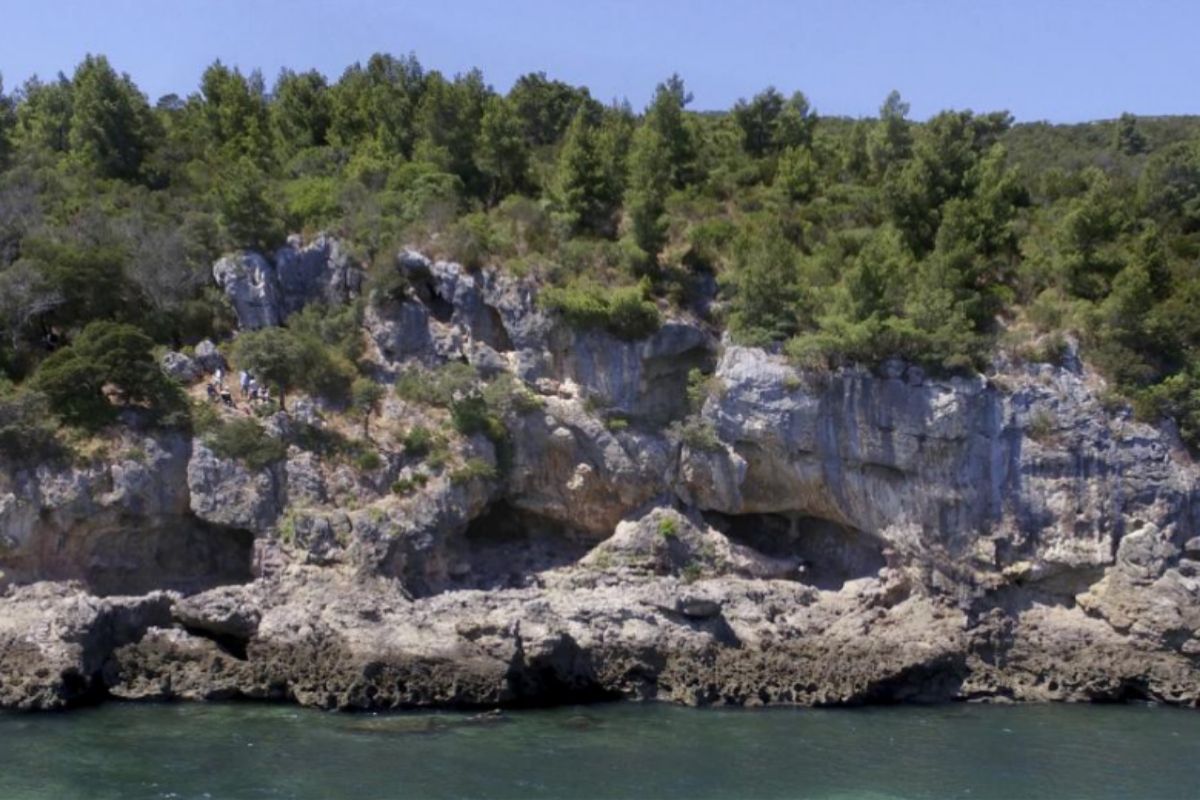- Evolution: 'Homo sapiens' did not cause the extinction of Neanderthals
- Diseases: Neanderthal genes that protected 'sapiens' from viruses
A cave hidden among the rocks, on a cliff on the Portuguese coast, offered refuge to a group of Neanderthals, who made this enclave their home some 100,000 years ago. Some stone tools and the remains of the animals that they hunted or collected have been left of the life they led there. Traces that include deer, horse or bird bones and - what is more striking - a great variety of crustaceans, molluscs and fish .
This is the most conclusive proof of the use of marine resources by European Neanderthals and implies that they were able to adapt to life on the coast , a trait that until now had only been found in modern Homo sapiens .
The finding also suggests that these hominids - the closest relative of our species - had behaviors very similar to those of the first human beings, who lived in the same period. "Neanderthals were also sapiens , that is the conclusion that must be drawn from the last decade of research," says João Zilhão, professor at the University of Barcelona and first author of an article, published this Thursday in the journal Science.
"European Neanderthals and African 'modern men' were extensively mixed (70% of the Neanderthal genome is still present in us 40,000 years later) and Neanderthals have passed with honor registration all the tests that have been put on them of cognition, behavior, intelligence and language " .
The Portuguese researcher published in 2018 a dating of the paintings from the Cantabrian cave of La Pasiega that produced a surprising conclusion: the new chronology (64,800 years) implied that its authors had to be Neanderthals, since the drawings were created before arrival from the sapiens to the peninsula.
"When we talk about Neanderthals and the first 'modern men' we are not talking about 'them and us', we are talking about our ancestors. The contribution of both to what is humanity today was not the same but all contributed : all they belonged to the same biological species, although it was more diverse then than it is today. "
Not all experts are as categorical as Zilhão when it comes to equating sapiens and Neanderthals. In fact, some scientists use the terms Homo sapiens and Homo neanderthalensis to point out the difference between the two species, while others speak of the subspecies Homo sapiens sapiens and Homo Sapiens Neanderthalensis .
What seems beyond doubt is that the findings of recent years disprove the idea that Neanderthalensis was a rough, wild creature, barely evolved. "We have shown that Neanderthals living in the Iberian Peninsula exploited marine and terrestrial resources with the same intensity as modern man living in South Africa at the same time," explains Francesco d'Errico, director of Research at the University of Bordeaux. and co-author of the study published in Science .
The human being and the sea
Modern Homo sapiens has a deep link with the coasts and the oceans. There is evidence of their adaptation to coastal life 160,000 years ago, long before our ancestors left the African continent. However, the material evidence that other hominids shared this adaptive capacity is scarce, which has led some researchers to consider it as an exclusively human capacity.
"The conditions of Figueira Brava do not exist in any other part of Atlantic Europe, where the current coastline is located tens of kilometers from what they were in other periods," explains Zilhão, "that is why Neanderthal exploitation on a large scale. of marine resources could not be demonstrated until now . "
A century ago, sites of Neanderthal origin appeared in Gibraltar, where there were remains of shellfish. Since then other similar sites have revealed artifacts, fish remains and even some seals from 40,000 to 70,000 years ago, but they were found in areas where modern sapiens had already arrived, so establishing authorship was complex. "There have been other indications of shellfish exploitation in deposits such as Aviones (Cartagena), Bajondillo (Málaga) or Gibraltar," explains Zilhão. "The novelty of Figueira Brava is the scale of the exploitation and the great diversity of resources, especially with regard to the sea ox and the fish."
Some researchers believe that foods from the sea may have played a crucial role in the evolution of the human brain , since they are particularly rich in Omega-3 fatty acids and other beneficial nutrients for this organ. This is why many experts believe that consuming these foods could fuel a cognitive revolution that led to a wide variety of technological and cultural innovations during the Stone Age (MSA).
But the new finding implies that this evolutionary advance may not have been unique to our species. "This discovery denies that the exploitation of coastal resources is key to explain the emergence of modern cognition in African man, as has been repeatedly proposed," concludes D'Errico.
According to the criteria of The Trust Project
Know more- Science and health
- science
The first analyzes of the coronavirus genome in Spain do not show any more virulent mutation
Climate crisis Half of the world's beaches could disappear during this century
CoronavirusThe photographic chronicle of the ICU doctors in Cremona: "We are people, not heroes"

